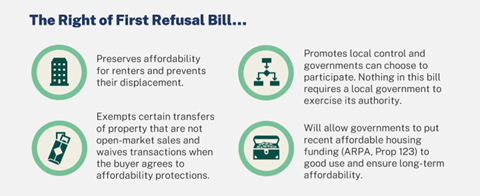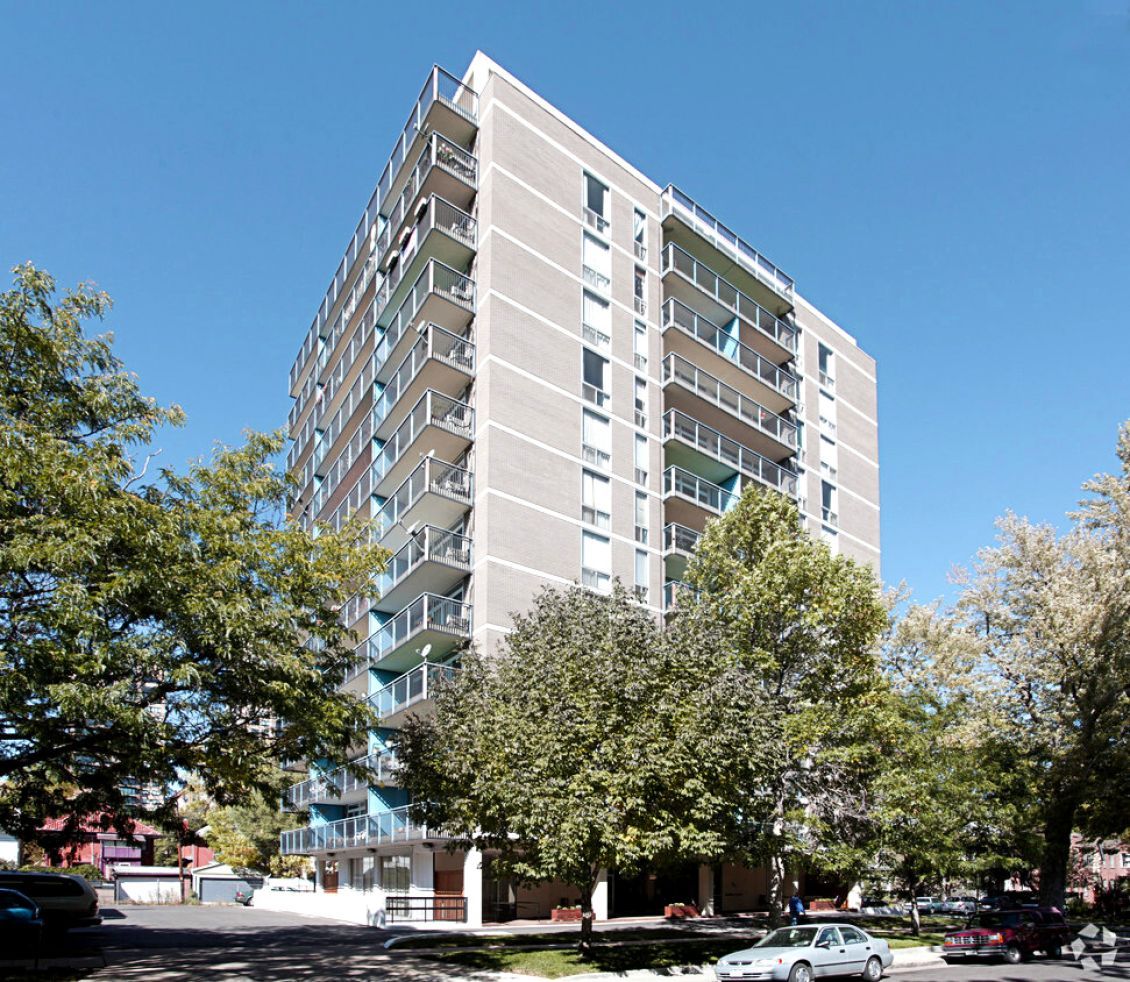As Colorado’s population continues to grow, the availability of affordable housing has declined steadily over the past decade with lagging wages putting housing cost burdens on too many Coloradans—most significantly those living on lower and fixed incomes.
Since 2011, Colorado has lost more than 250,000 rentals that cost $1,000 or less a month, and for very low-income households, housing with rents below $600 a month has fallen by 40 percent, according to Harvard’s Joint Center for Housing Studies. Meanwhile the housing supply struggles to keep pace with a population that has grown by nearly 690,000. Colorado is not unique in the declining availability of affordable homes. Lower-cost rentals have decreased in every state and that supply has fallen by 3.9 million units nationwide over the last decade.
Across the country and in Colorado, we simply cannot build our way out of the affordable housing crisis. Preserving our supply of currently affordable homes is an essential strategy to one day ensure everyone can stably afford a home in their own community.
In addition to building new homes, we must also preserve the affordability of currently affordable rental homes through recapitalization, acquisition, rehabilitation, and adaptive reuse. This includes multifamily properties required to be affordable to low-to-moderate income residents by virtue of public funding and investments, and properties that don’t have such restrictions but are renting below market rates—often small to medium size buildings with fewer than 50 units.
Here are four ways to prioritize the preservation of our currently affordable homes:
1. Spell out how preservation is both a critical housing solution and smart policy
Consider these facts: Preserving current affordability is cost-effective and is also the best way to maintain and quickly increase affordable supply, take advantage of new public investment, and keep households and communities together.
As Colorado strives to promote new home production, it’s important to make it clear why preservation makes sense for developers, policymakers, and communities.
- Preservation is cost-effective - it costs as much as 30% to 50% less than new construction. Existing multifamily buildings don’t need to secure new land, rezoning, or infrastructure, and rehabilitating an existing building can bring upgraded energy and resource-saving features. This reduces future maintenance costs and could be paid for with massive new federal investments in climate-resilient projects.
- Acquiring properties and ensuring their long-term affordability adds to our supply of affordable rental homes. According to an Enterprise analysis of 2022 American Community Survey data, Colorado has an estimated 373,800 rental units in properties with fewer than 50 units, representing 47% of all rentals. These units have no formal affordability restrictions yet comprise 54% of homes affordable to lower income Colorado renters.
- Losing currently affordable housing to market-rate interests exacerbates inequities in our housing system, where people living on lower incomes in every part of the state suffer the greatest dearth of affordable options. Therefore, preservation is vital to reducing individuals’ and families’ involuntary displacement, helping residents stably remain in their homes and from being forced into the growing number of housing insecure and homeless Coloradans.
2. Ensure existing affordable housing resources support both preservation and production
Colorado’s newly created State Affordable Housing Fund, established by the statewide voter-approved Proposition 123, includes concessionary capital and equity resources ideal for property preservation. Investments of these funds should put preservation on equal footing with new development, and not be prioritized solely for new development. The same is true for other existing public funds, such as the 4% low-income housing tax credit and private activity bond programs, which largely benefit new development—in part because they are stretched so thin. Local governments should also pursue eligible state grants and utilize local housing programs for preservation opportunities that will help keep their economies and community fabric strong.
Colorado Community Development Finance Institutions (CDFIs), which are key to providing flexible financing for preservation, have significant preservation pipelines we cannot support due to resource constraints. Colorado’s nonprofits, housing authorities, and private companies need many more resources to successfully preserve affordable rentals. Unfortunately, with limited capital comes limited impact.
Unless we begin directing state resources such as Proposition 123 that are already allowable for these purposes to preservation—and creating new, innovative strategies to fund preservation—Colorado households and communities will continue to lose affordable homes, imposing the greatest harm to our most vulnerable communities.
3. Create new and innovative preservation financing tools
Colorado needs more financial tools to successfully preserve existing affordability, as recognized by both the State Affordable Transformational Task Force and the State Strategic Housing Working Group. And an informal “preservation network” of affordable housing financers (including Colorado Housing and Finance Authority, Enterprise, Impact Development Fund, Weave Finance and Mercy Community Capital) and developers working to preserve existing affordability has noted such need when seeking state resources to continue providing flexible and innovative preservation financing products. Still these funds are not adequate to meet demand. A $5 million preservation-specific pilot fund housed at CHFA was tapped out soon after launch.
According to an analysis of 2021 CHFA data by Jennifer Newcomer of the Colorado Futures Center, there are approximately 1,400 subsidized and therefore currently affordable properties statewide.
For both subsidized and currently affordable properties, new resources and strategies must be developed to stem this unprecedented loss of affordable housing for low- and moderate-income families. Local and state agencies can provide low cost, nimble, short- and long-term financing, acquisition and predevelopment funds, and tax credits, but current resources are insufficient for those subsidized units expiring in the next 5 years, much less the next 10. Financing tools that specifically support preservation activity have been proven successful, but the need for additional capital is extreme.
CHFA has estimated that statewide, there are more than 111,000 publicly funded units with affordability requirements. And in the next 15 years, affordability requirements on approximately 18,766 of those units will expire, meaning they may well be turned into homes affordable only to people with much higher incomes, according to the agency's most recent estimate.
4. Advocate for legislation that can ensure a statewide Right of First Refusal
This year, Colorado legislators will once again pursue legislation aimed at boosting our supply of affordable housing by giving local governments the opportunity to purchase multifamily buildings that are otherwise going up for sale. Enterprise is proud to be one of the lead supporters of this important policy intervention.
The Right of First Refusal provision of this bill gives a local government or housing authority the ability to acquire and maintain the long-term affordability of publicly subsidized multifamily properties, enabling renters to stay in their homes and communities.
The introduced bill also includes a Right of First Offer provision, ensuring local governments receive notice of the forthcoming sale of other multifamily properties of a certain size and age, giving the local government a small window in which to put in an offer. This may particularly enable the preservation of affordability in multifamily properties that are not deed restricted but renting below market rates.

Though rights of first refusal and first offer will be critical to creating opportunities for local governments to preserve affordability, this promise cannot be realized without sufficient funding for these acquisitions and rehabilitations. The same is true for non-government developers, housing providers, and community-based organizations striving to maintain affordability for individuals, families, and communities.
Preserving both deed-restricted and unrestricted affordability will take a multi-pronged, intentional, and collaborative approach from state and local governments and the affordable housing community, as well as robust investment of existing and new financing resources. All Coloradoans deserve a safe, stable, affordable home. As a statewide community, we cannot afford to lose the existing affordability if we are going to achieve that worthy goal.
